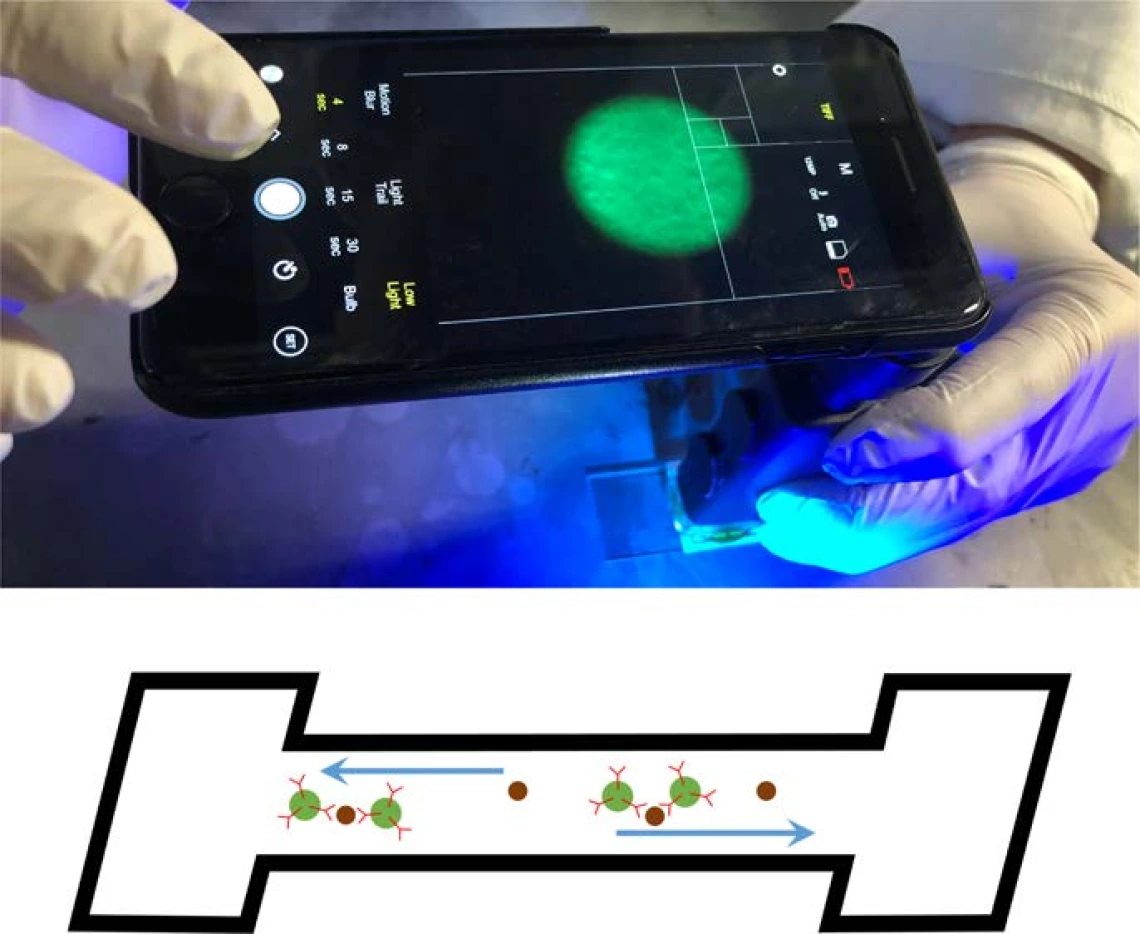New Research uses Novel Smartphone-Based Technology to Detect Waterborne Pathogens

In a study published in ACS Omega in July 2019, a multidisciplinary team from the University of Arizona (UA) performed norovirus detection on a microfluidic paper analytic device without using sample concentration or nucleic acid amplification, demonstrating a detection method adapted to field-based applications. The team of researchers was led by Dr. Jeong-Yeol Yoon from the UA College of Engineering and Dr. Kelly Reynolds from UA Zuckerman College of Public Health and included Christina M. Morrison and Dr. Walter Q. Betancourt of the WEST Center.
As described in the publication:
Human enteric viruses are small infectious agents that can cause gastrointestinal disease upon ingestion of very low doses. Detection of these viruses requires an extremely low limit of detection (LOD), especially when assessing viruses in reclaimed wastewater or unconfined aquifers used as sources of drinking water. Norovirus is one of such well-known examples and is the most common cause of epidemic and sporadic gastroenteritis worldwide.
Highly sensitive detection methods are needed for assessing exposure to norovirus, but existing methods fail to provide sufficient rapidity and field applicability. Microfluidic paper analytic devices (µPADs) have shown numerous advantages over silicone-based microfluidic devices. However, optical detection of low concentrations of pathogens has rarely been demonstrated on paper substrates because paper is optically opaque and non-homogeneous (porous). When detection has been achieved, techniques have required nucleic acid amplifications. Such methods are not sufficiently simple for field-based applications and cannot be considered near-real-time.
The overarching aim of this newly-published work was to demonstrate extremely low LOD, preferably near to the single virus copy level (corresponding to ~10 ag), in a rapid and field-ready manner using a µPAD and novel smartphone-based fluorescence microscopy. Using new technology and methods, the research team demonstrated an easy-to-use, low-cost, and extremely sensitive assay for detecting waterborne virus pathogens that does not require concentration, in vitro cell culture, and/or nucleic acid amplification. The method with extremely low LOD can also be applied for detection of any other viral pathogens in environmental samples such as food, water, and fomites.
To read the full publication, click on the link below:
Chung, S., et al. (2019). "Smartphone-Based Paper Microfluidic Particulometry of Norovirus from Environmental Water Samples at the Single Copy Level." ACS Omega 4(6): 11180-11188.
Full list of authors:
Soo Chung,† Lane E. Breshears,‡ Sean Perea,§ Christina M. Morrison,∥ Walter Q. Betancourt,∥
Kelly A. Reynolds,⊥ and Jeong-Yeol Yoon*,†
†Department of Biosystems Engineering, ‡Department of Biomedical Engineering, §Department of Chemical and Environmental Engineering, ∥Department of Soil, Water and Environmental Science, and ⊥Mel and Enid Zuckerman College of Public Health, The University of Arizona, Tucson, Arizona 85721, United States

